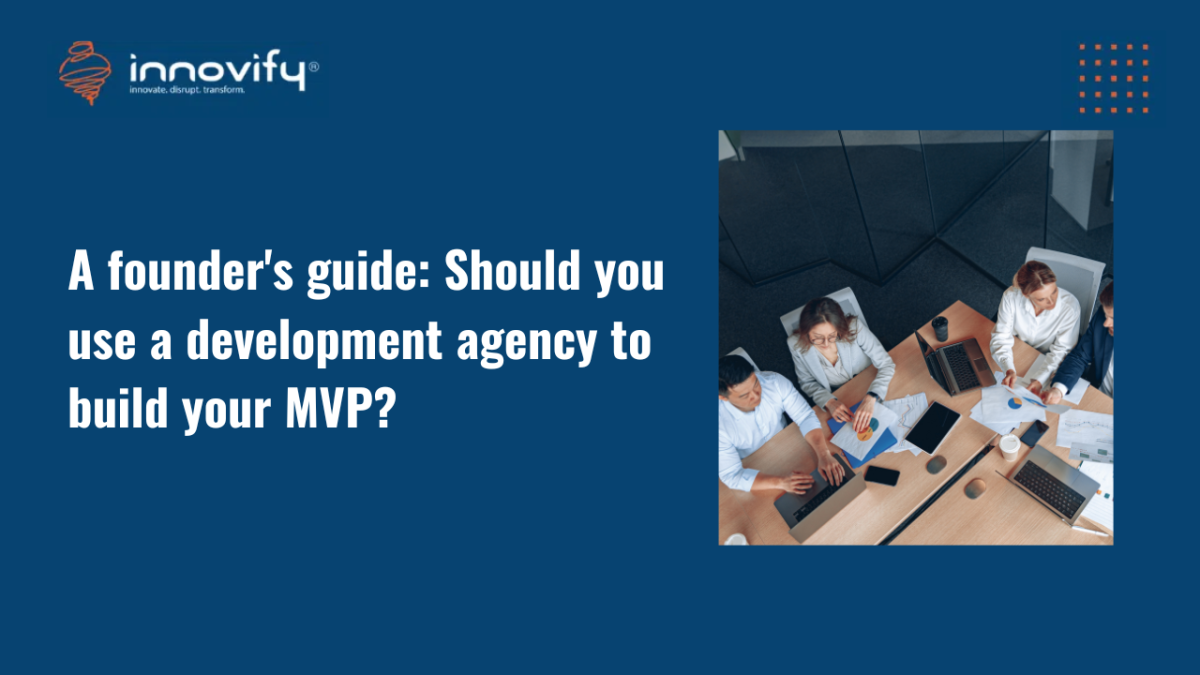AI/ML
A founder’s guide: Should you use a development agency to build your MVP?
A Founder’s Guide: Should You Use a Development Agency to Build Your MVP?
Summary:
This blog post provides a comprehensive guide for entrepreneurs considering building a Minimum Viable Product (MVP). It delves into key factors such as technical expertise, time constraints, budget, and focus when deciding between building an MVP in-house or outsourcing to a development agency. The post also explores the benefits of the MVP approach, including validating product ideas, reducing costs, accelerating time-to-market, and gathering valuable user feedback. It outlines the steps involved in the MVP development process, from user research and market positioning to design, development, and testing. Additionally, the blog addresses common questions about MVP development time, cost, and best practices.
Building a Minimum Viable Product (MVP) is a critical step for any startup. It allows you to test your product idea with real users, gather valuable feedback, and iterate on your product. But should you build it yourself or hire a development agency? Let’s dive into the key considerations.
What to Consider When Building an MVP?
Technical Expertise:
Do you have the necessary technical skills? If you’re not a developer, building an MVP yourself can be challenging and time-consuming.
How complex is your product idea? A simple MVP might be feasible for a solo founder, but a complex product will likely require a team of developers.
Time Constraints:
How quickly do you need to launch your MVP? A development agency can accelerate the development process and help you launch your product faster.
Budget:
How much can you afford to invest in your MVP? Hiring a development agency can be costly, but it can save you time and money in the long run.
Focus:
Do you want to focus on building your product or managing a development team? Outsourcing development to an agency allows you to focus on your core business.
What is the Best MVP Development Company?
Choosing the right development agency is crucial. Look for an agency with experience in building MVPs, a strong track record, and a good understanding of your industry. Innovify is a leading MVP development service company, with a history of creating fast growing unicorns like Zilch, that can help you bring your startup idea to life.
What is the MVP Approach to Product Development?
The MVP approach involves building a basic version of your product with minimal features. This allows you to quickly test your product idea with users and iterate on it based on their feedback.
Why is MVP Development Important for Startups?
MVP development is essential for startups because it helps them:
- Validate their product idea
- Reduce development costs
- Launch their product faster
- Gather user feedback
- Iterate on their product
Should a Founder Be Able to Build a MVP on Their Own?
While it’s possible for an entrepreneur to build an MVP on their own, it’s not always practical. If you have the time, skills, and resources, you can build your MVP yourself. However, if you’re short on time or lack technical expertise, hiring a development agency is a better option. Also, as a founder, your primary focus needs to be the growth of the business, fund raising and team formation.
How Do I Go from an Idea to an MVP?
Here are the steps to go from an idea to an MVP:
User Research: Understanding Your Audience
Identify your target audience: Who are the people who will benefit most from your product?
Conduct user interviews: Gain insights into their needs, pain points, and desires.
Create user personas: Develop your ideal customer profile that you can describe in all possible manners, which can help make you product decisions.
Market Positioning: Finding Your Niche
Analyze the market: Identify competitors, market trends, and potential opportunities.
Unique Selling Proposition (USP): What sets your product apart from the competition?
Value Proposition: Clearly articulate the value your product offers to users.
Unique Selling Proposition (USP): What sets your product apart from the competition?
Value Proposition: Clearly articulate the value your product offers to users.
Go-to-Market Strategy: Reaching Your Audience
Sales and Marketing Channels: Determine the most effective ways to reach your target market.
Pricing Strategy: Decide on a pricing model that aligns with your value proposition.
Distribution Channels: Choose the channels through which you will deliver your product.
Pricing Strategy: Decide on a pricing model that aligns with your value proposition.
Distribution Channels: Choose the channels through which you will deliver your product.
Defining Your MVP: The Core of Your Product
Core Features: Identify the essential features that deliver the core value proposition.
Prioritization: Rank features based on their importance and impact.
MVP Scope: Clearly define the boundaries of your MVP to avoid feature creep.
Prioritization: Rank features based on their importance and impact.
MVP Scope: Clearly define the boundaries of your MVP to avoid feature creep.
Choosing a Development Approach: Build or Buy?
In-house Development: Consider your team’s skills, resources, and time constraints.
Outsourcing: Hire a development agency to expedite the process and leverage expertise.
Designing Your MVP: Visualizing the User Experience
Wireframing: Create basic layouts to structure the user interface.
Prototyping: Build interactive prototypes to test user flows and interactions.
User Interface (UI) Design: Focus on creating a visually appealing and intuitive design.
Developing Your MVP: Bringing Your Vision to Life
Technology Stack: Select the right technologies to build your MVP efficiently.
Development Process: Choose an appropriate development methodology (e.g., Agile, Waterfall).
Quality Assurance (QA): Rigorously test your MVP to ensure it meets quality standards.
Testing Your MVP: Learning from User Feedback
User Testing: Conduct usability tests to identify areas for improvement.
A/B Testing: Experiment with different design elements and features.
Iterate and Refine: Continuously improve your MVP based on user feedback and data.
How Long Did It Take for You to Build Your MVP?
The time it takes to build an MVP varies depending on the complexity of the product and the development approach. A simple MVP can be built in a few weeks, while a more complex MVP may take several months.
How Much Does It Cost for You to Build Your MVP?
The overall cost to build an MVP varies depending on the complexity of the product and the development approach. A simple MVP can be at negligible costs using low-code or no-code tools, while a more complex MVP may cost you more, especially if it has many 3rd party integration and regulatory requirements.
Here is our guide to manage your MVP development budget.
Should I Use an Agile Framework to Develop My MVP?
Yes, using an agile framework like Scrum or Kanban is highly recommended for MVP development. Agile frameworks help you break down your development process into smaller, manageable iterations, allowing you to quickly adapt to changes and deliver your MVP faster.
What is the Best Way to Create a MVP?
The best way to create an MVP is to:
Focus on core features: Prioritize the most essential features of your product.
Gather user feedback: Use surveys, interviews, and beta testing to get user input.
Iterate on your product: Continuously improve your MVP based on user feedback.
Launch early and often: Don’t wait for perfection; launch your MVP and start gathering user data.
Key Considerations for MVP Development
MVP Development Time: The time it takes to build an MVP depends on the complexity of the product and the development team’s experience.
MVP Development Cost: The cost of MVP development can vary widely depending on the features, technology stack, and development team’s rates.
MVP Development Best Practices: Follow agile development methodologies, dont reinvent the wheel, prioritize core features, gather user feedback, and iterate on your product.
Conclusion:
Building an MVP is a strategic approach that can significantly impact the success of a startup. By prioritizing core features, gathering user feedback, and iterating on the product, entrepreneurs can validate their ideas, minimize risks, and achieve faster market entry. While building an MVP in-house is possible for those with technical expertise and time, outsourcing to a development agency can often be a more efficient and cost-effective solution. Ultimately, the decision to build or outsource depends on individual circumstances and project requirements. By carefully considering these factors and following the outlined steps, entrepreneurs can effectively leverage the MVP approach to bring their innovative ideas to life




